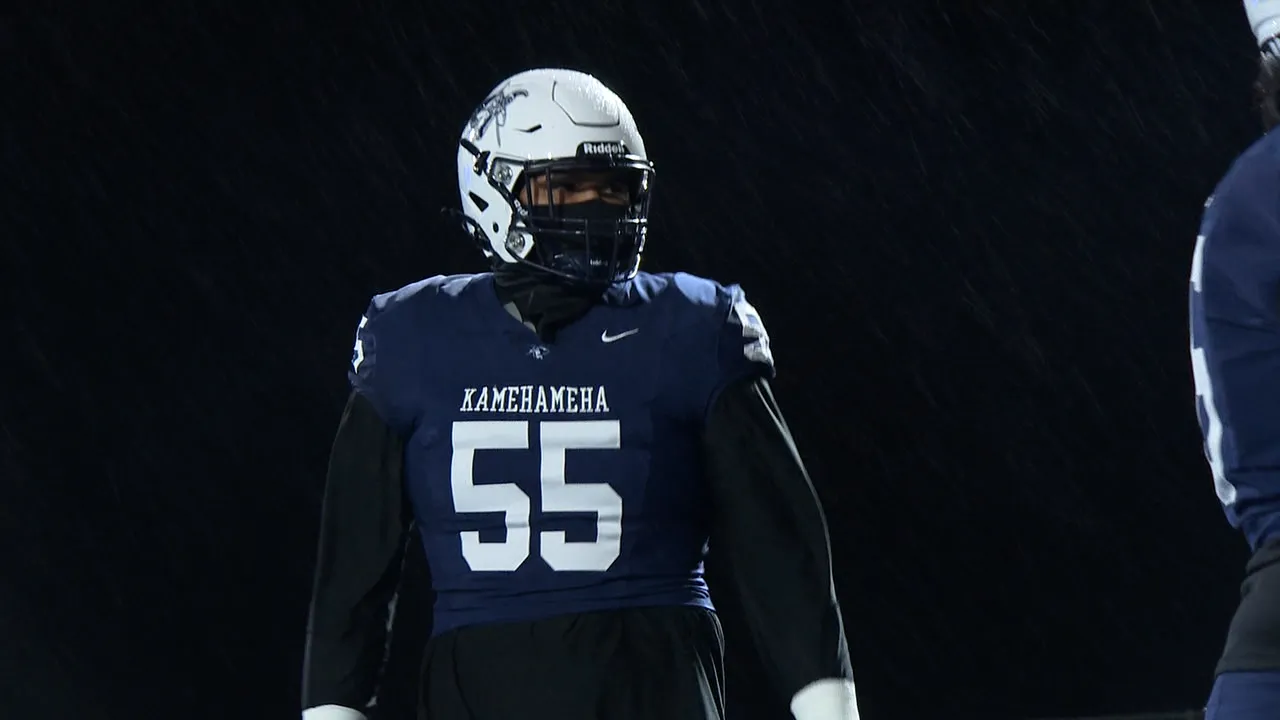Malakai Lee, a towering 6’7”, 320-pound offensive tackle from Kaneohe, Hawaii, has the college football world wondering. This weekend, the four-star prospect narrowed his list to four powerhouse programs in an X post: Michigan, Alabama, Georgia, and Texas.
Ranked as a top-10 offensive tackle in the 2026 class by On3, Lee’s decision carries significant weight for these programs vying to strengthen their offensive lines. Each school offers a compelling case, but Michigan might have the edge. Let’s dive into why the Wolverines could best fit this elite recruit.

Recruitment Battle For OT Malakai Lee Heating Up Fot Football Bluebloods
Malakai Lee’s journey to becoming one of the most coveted recruits in the 2026 class started at Kamehameha Secondary in Honolulu, Hawaii. At 6’7” and 320 pounds, he possesses the size, strength, and athleticism that make offensive line coaches salivate.
Top 4 🐘🤘🏽🐶〽️ https://t.co/mrMtq5nbaB
— Malakai Lee (@MalakaiLee2) May 24, 2025
According to On3, Lee ranks among the top 10 offensive tackles nationally, with a rating of 92.69, placing him at No. 118 overall in the 2026 class. His physical profile and on-field performance have made him a prime target for some of college football’s biggest names.
Lee’s announcement on X that he’s down to Michigan, Alabama, Georgia, and Texas came after he initially considered a broader list that included BYU and USC. This decision marks a pivotal moment in his recruitment, as all four programs have a storied history of developing talent and competing for national titles.
But what sets Michigan apart in this race?
Michigan Offers Proven Track Record of Developing NFL Offensive Linemen
One of Michigan’s strongest selling points is its reputation for producing NFL-ready offensive linemen. As of May 2025, the Wolverines lead all colleges with 14 offensive linemen on NFL rosters, a stat that underscores their ability to prepare players for the next level.
This isn’t just a recent trend; Michigan has a long history of excellence in the trenches.
Since 1995, the program has produced stars like Steve Hutchinson, a four-year starter who allowed zero sacks in his final two seasons and was part of the 1997 national championship team. Hutchinson went on to become the Seattle Seahawks’ first-round pick in the 2001 NFL Draft.
One of the biggest factors for any recruit is playing time. At Michigan, Lee could have a clearer path to early playing time compared to Georgia or Alabama, where depth charts are often loaded with four- and five-star talent.
KEEP READING: College Football Recruiting Just Changed Forever, New Details Emerge Behind the On3-Rivals Merger
Michigan’s offensive line lost several starters to the NFL after the 2024 season, including Zak Zinter and Drake Nugent, creating opportunities for young players to step in. Lee’s size and skill set would make him a candidate to compete for a starting spot as early as his freshman year.
Fit is also crucial. Lee, a strong run blocker with the potential to develop into a dominant pass protector, would thrive in Michigan’s run-heavy scheme. The Wolverines have historically leaned on a physical, ground-and-pound style of play, which aligns with Lee’s strengths.
While Georgia and Alabama also prioritize the run game, their systems are more balanced, and Texas’s offense under Sarkisian leans more toward a spread approach, which might not play to Lee’s current strengths as much.
College Sports Network has you covered with the latest news, analysis, insights, and trending stories in college football, men’s college basketball, women’s college basketball, and college baseball!

